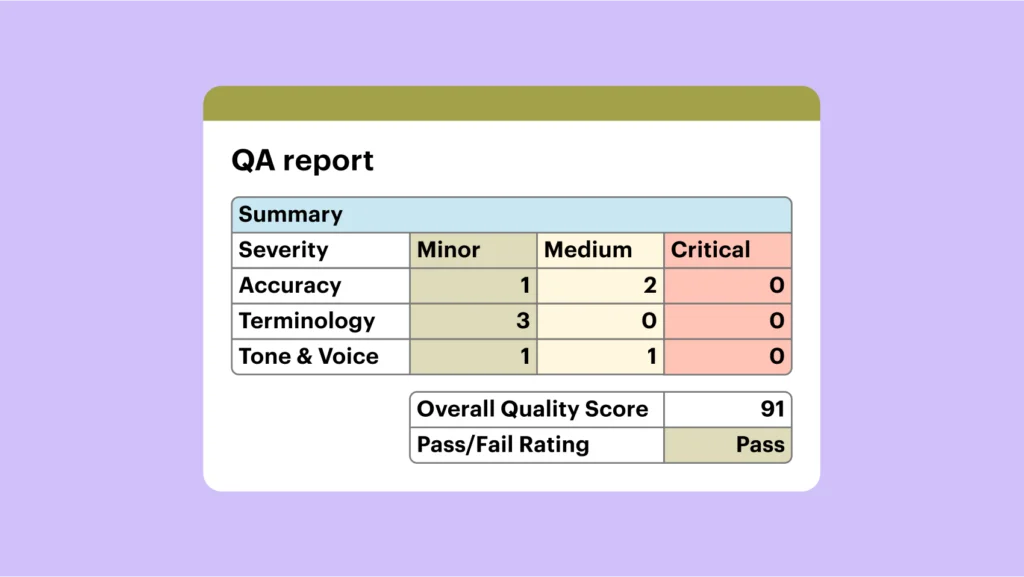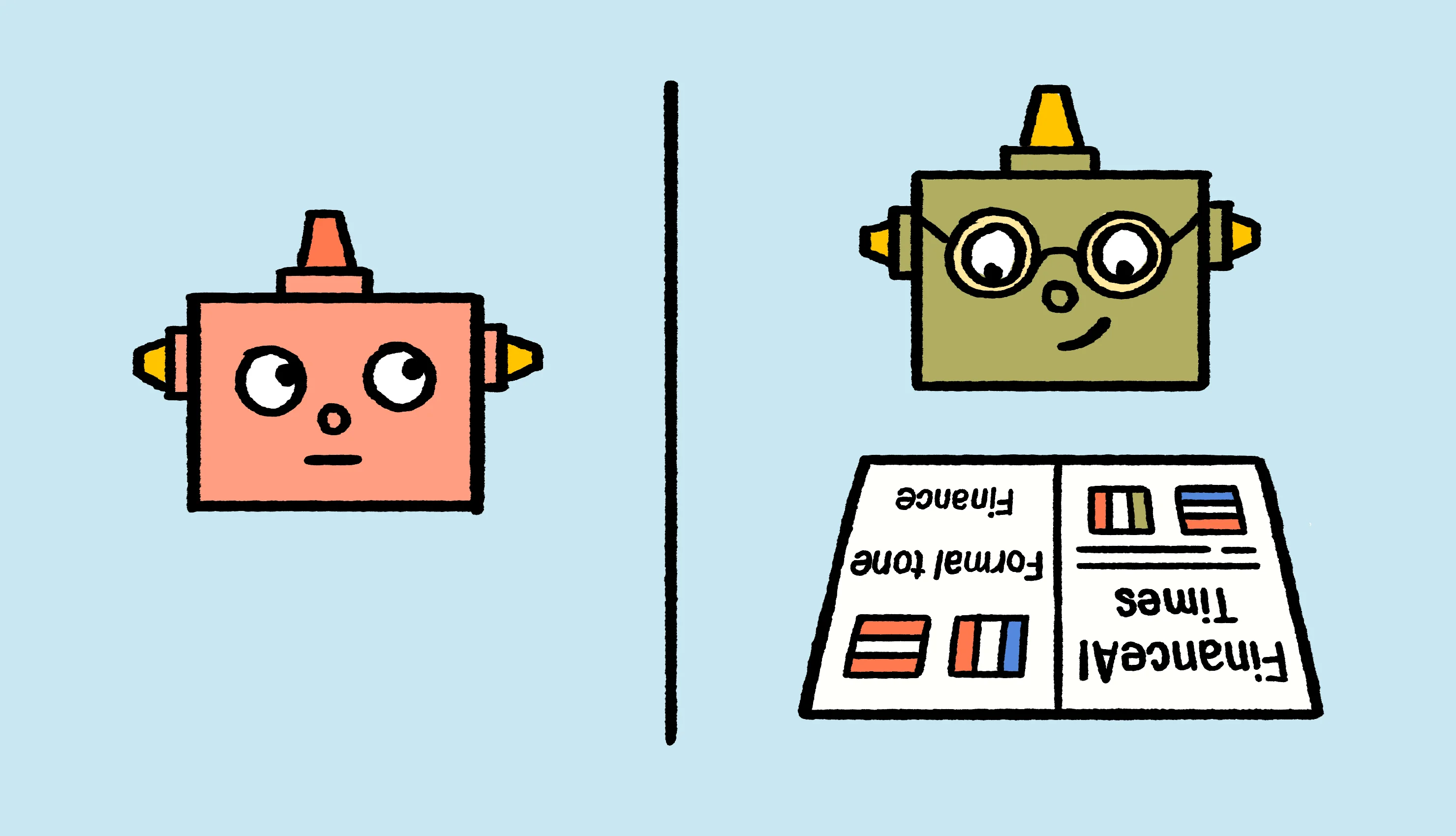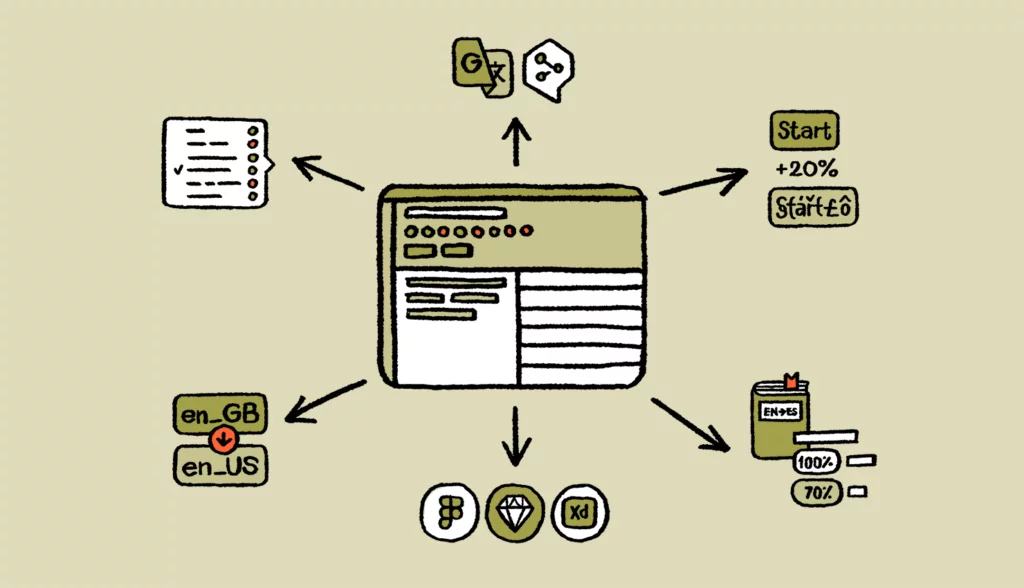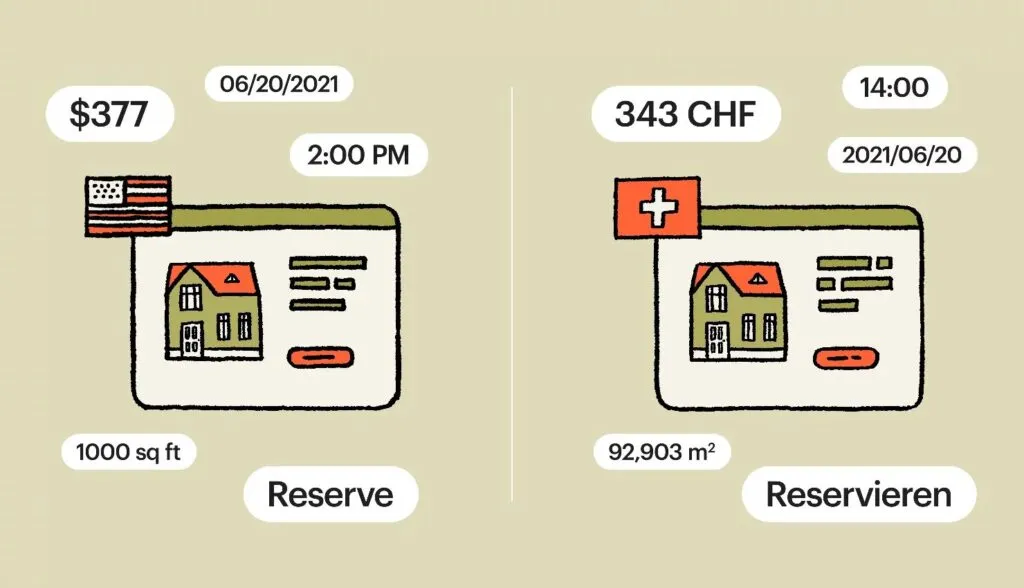Discover the key differences between machine translation (MT) and generative AI translation, and which one is right for you.
The first attempt at machine translation was in 1954, when an IBM 701 computer or “electronic brain” automatically translated 60 sentences from Russian into English, proving that machine translation was possible. Despite the time-consuming research and considerable expenses involved, this paved the way for the future of language translation.
Fast-forward several decades to 2006, when Google launched Google Translate. Even though translations weren’t perfect, language professionals found it convenient and easy to use.
Google Translate has improved tenfold since then, but there’s still a lot of uncertainty surrounding machine translation, and many language professionals argue that you still need a human translator in the loop.
However, with generative AI technology, like ChatGPT, quickly reshaping the translation industry, we can’t help but ask, has the time finally come when global businesses can fully rely on “electronic brain” translations?
To help answer this question, first, you need to understand what is AI translation, how machine translation and generative AI for translation work
Note: for this article, I’ll also refer to generative AI for translation as ‘AI translation’.
The technology behind MT and generative AI for translation
Machine translation follows a predefined set of rules
Machine translation works by analyzing patterns in large volumes of bilingual data, and generating translations based on the probability of certain words and phrases occurring together in different languages.
AI translation transfers learnings from one task to another
Generative AI translation goes several steps further than machine translation. Older AI translation tools learned from vast amounts of data to improve the contextual understanding of language, resulting in more fluent, contextually appropriate, and human-like translations. Some of the best AI translation tools today take this even further with innovations like zero-shot translation, used by newer AI models like ChatGPT, to solve complex problems with little data.
“Big data is not a priority anymore”, said Stanford computer science professor Carlos Guestrin speaking at the November 2022 Intelligent Applications Summit.
Back up, back up, zero-shot what?
‘Few- or zero-shot translation’ means an AI model can use transfer learning (knowledge learned from one task and re-used on a related task) to generate good translations from one language to another, even though it has never been taught to translate between some language pairs.
Want to learn more? Discover how AI translation works and what’s the difference between neural language processing (NLP) vs. large language models (LLM).
Comparing MT and AI translation: pros and cons
Now that you understand how machine translation and generative AI translation work, let’s go over their strengths and weaknesses.
Machine Translation (MT) advantages
Speed and cost-effectiveness
One of the main benefits of machine translation is its speed and cost-effectiveness. It can process large volumes of content in a short amount of time, making MT a valuable tool for organizations that require quick translations without huge spend.
Available to everyone
Machine translation tools like Google Translate and DeepL are free and open source, making them available to everyone. These tools also have APIs so you can integrate them with various online platforms and applications, allowing users to effortlessly translate text within their existing tool stack in just a few clicks.
Excels at standard terminology
Machine translation can easily recognize and accurately translate commonly used terms and expressions, particularly in sectors where there’s specific industry terminology. This consistency and precision are especially important in fields like law, finance, or technology where uniformity and accuracy of jargon are essential.
Machine Translation (MT) disadvantages
Struggles with complex content
While machine translation excels at handling straightforward texts, it often struggles with more complex content. Translating idiomatic expressions, cultural nuances, and technical jargon can pose challenges for MT systems, leading to inaccuracies and loss of meaning in the translated text.
No contextual understanding
Traditional machine translation systems rely heavily on pre-defined rules and dictionaries, which means it struggles with new or specialized domains. Since MT systems translate word-by-word without considering context, this often leads to incorrect translations. This is especially true for languages with many homonyms (words that are spelled or pronounced the same way but have different meanings).
Lacks consistency
Machine translations might face problems maintaining consistency in translations, especially for large projects. This can lead to confusion and misunderstanding if different terms are used to translate the same word or phrase.
Inaccurate for lower-resource languages and language pairs
Machine translation isn’t very accurate when it comes to translating lesser-known languages. Some languages don’t have enough data for machine translation systems to learn from, so the quality of translation decreases. This is also true with language pairs. While using machine translation tools, you may have noticed that translations from one language to another are less accurate, say from English to French vs Spanish to French.
Generative AI translation advantages
Learns and evolves
One of the key advantages of AI translation is its ability to constantly learn and evolve. By continuously analyzing training data, AI translation systems can improve their accuracy and keep up with the ever-changing linguistic landscape. AI can also be trained on industry-specific datasets, like medicine or law, so it can generate more accurate and relevant translations.
Processes complex language
One exciting aspect of AI translation is its ability to decipher more complex language. It can understand slang, colloquialisms, and cultural references, leading to more accurate and human-like translations.
Translates with context
Some generative AI translation tools use context (also known as prompts) to deliver accurate translations with context. You can give generative AI context, like brand voice, tone, industry, audience, and much more, often outlined in a content translation guide, so your translations are not only more accurate, but they’re also on-brand.
Better translation memory
Generative AI systems are more consistent than MT systems. Often you can feed an MT system a glossary of commonly translated terms, but you have to keep updating the glossary with new terms. AI, on the other hand, remembers existing terms and stores new terms automatically.
Bulk translates quickly
Generative AI can translate large amounts of content with context and in bulk, in a matter of minutes. This means you can move a lot faster with translation and localization projects that are time-sensitive.
More accurate translations for low-resource languages
Generative AI models built on zero-shot learning can learn to recognize unseen content and translate low-resource languages with higher accuracy. Low-resource languages are those that have less available data to learn from.
Cost-effective
While there are costs involved with implementing and maintaining AI translation systems, they can be more economical in the long term, especially when large volumes of content need to be translated regularly.
Generative AI translation disadvantages
Language exceptions
While AI models can learn rules and patterns, they may struggle with exceptions to these rules, which are common in many languages. These inconsistencies in language pose a remarkable difficulty in translation accuracy.
Not great for specialized fields
In fields such as legal or medical where accuracy is paramount and language is complex, AI translations may not be reliable or accurate enough. You can fine-tune some generative AI models but it’s still a work in progress and, as mentioned above, is a high-effort task.
Privacy concerns
Generative AI systems may store or record translated data for future improvements and training. This might be a cause for worry among users in industries such as healthcare, legal, or finance, where privacy regulations are stringent, and the data involved is highly confidential. That’s why it’s important to choose a partner that cares about data security when using AI translation tools.
At Lokalise, we take data security seriously. Lokalise AI only processes the content you translate, its description, and the context you provide. The data submitted through Lokalise AI is not used for other purposes, such as model training.
Translation bias
Generative AI translation models are only as neutral as the data it’s trained on or learns from. If the data includes inherent biases — like gender, regional, or racial bias — the AI localization system could inadvertently replicate these biases in its translations. This risk of perpetuating and amplifying existing prejudices can lead to mistranslations and misunderstandings, which can be problematic, particularly in a global communication context. To minimize bias creep in translations, AI training and learning will need to be closely monitored and regulated.
The future of machine and generative AI translation
As technology develops and more tools become available, translation professionals will be able to work faster while maintaining quality at a more affordable price.
While there are some challenges to overcome with generative AI translation, like inaccuracy for lower-resource languages and translation bias, it’s impossible to ignore the power of AI translation models to understand context, nuances, and even cultural references.
Eventually, AI translation models will deliver translations that are virtually indistinguishable from human translations.
But it won’t replace human translators entirely. Not yet anyway. Even the most advanced artificial intelligence translation services still have a long way to go in matching how humans process languages.
One thing is certain. AI translation technology is advancing rapidly and is more accessible, so we can expect AI translation to become widely adopted over the coming years.
What should I use to translate: MT or generative AI?
There are several factors to consider when choosing between machine translation and generative AI translation:
- Budget
- Speed
- Accuracy
Machine translation is still valid as a quick and cost-effective way to translate large volumes of non-critical content. But, if you need more accurate, contextual, and on-brand translations, then AI translation is your best bet.
Some language professionals are already using a combination of machine translation, generative AI, a human translator, and post-editor in the loop, depending on what they’re translating. Here’s a quick breakdown to help you decide which combination to choose:
- Complex/high-risk translations. Yes: AI and human translations with human post-editing and linguistic quality assurance
- Medium risk translations. Yes: AI translations with human post-editing and linguistic quality assurance
- Non-critical/minimum viable translations. Yes: Machine translation with AI-powered linguistic quality assurance
At Lokalise, we have several AI translation features that can make your translation and localization process much smoother.
Lokalise AI
At Lokalise, we recently launched Lokalise AI. A translation tool that you can use inside Lokalise to shorten, rephrase, optimize for SEO, and translate content with context and in bulk.

You can select as many languages as you like, and Lokalise AI will translate your content into every language in a matter of minutes. This means you can move quickly with localization and translation projects, and keep all your content in one place, instead of storing it in individual spreadsheets for each locale.
Lokalise AI LQA
Another feature of Lokalise AI is AI LQA (linguistic quality assurance), which automatically reviews your content.

This is useful to review content quickly, without a human translator in the loop. We recommend you use this feature on translations that are non-specialized and have no terminological or technical difficulties.
For now, human translators and reviewers are essential for high-stakes content. However, looking at some preliminary results of Lokalise AI, generative AI translation is set to redefine the translation sector in the near future.
Lokalise AI: Translate with context in one go
Move faster with translation projects using AI translations.





